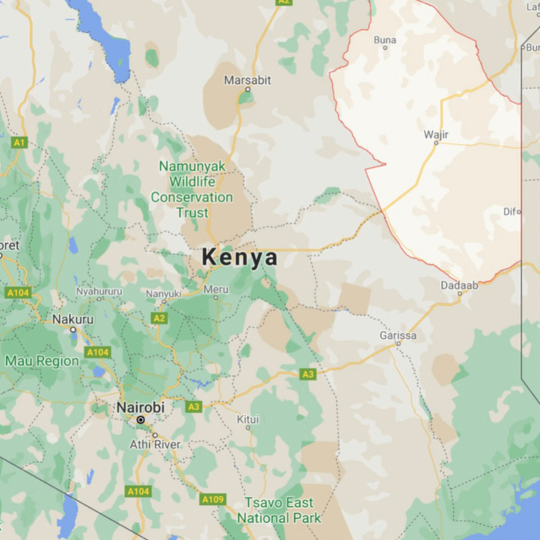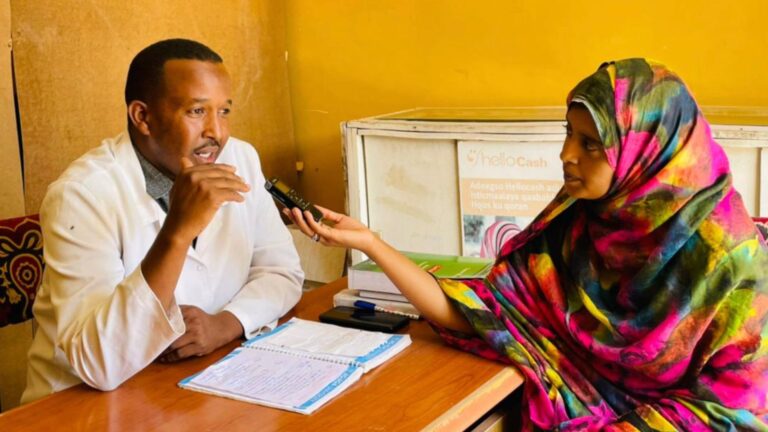By Ruth Harley with special thanks to all the campaigners that shared information
Campaigners in Kenya are spread out all over the country. This report highlights the key challenges that each region or county faces, the type of FGM that takes place, and a few action points for moving forward.
There is no one way to fight FGM. Each region or county has different cultures, traditions, and challenges around FGM, therefore we have to be specific in our approaches to end FGM.
West Pokot:

Challenges :
- West Pokot itself is made up of many hard-to-reach villages.
- Many community members are still yet to be reached with the end FGM campaign and don’t even know that FGM is a criminal offense.
Type of FGM:
Type 3
How it takes place:
This takes place in the form of two ceremonies. The first is a public ceremony where all community members of both genders are present. The clitoris is publicly cut but not completely, it is done in front of everyone in the community… Uncles, brothers, friends will all witness this.
The second stage happens in a secluded place out in nature. The legs of the girl child are tied together and the labia is cut off. This is an extremely painful and severe type of FGM.
Action points:
- Media activities with respected community members.
- Encourage the government to speak out about FGM and push for education to help change the view of FGM.
- Vision: empower the communities and people themselves, the community themselves have their conversations
Meru county:

Challenges:
- It is a community belief that only once you are cut, you are a grown-up girl. Only once you have undergone FGM you wiill be accepted by society.
- False accusations about the uncut girl : for example it is dirty if a girl is not cut.
Type of FGM:
Type 1 FGM – cytoplasm iridectomy
Action points:
- Continue engagement with radio shows talking to elders and school children, religious leaders, and activists 1-1 on the radio.
Isiolo County:

Challenges:
- Kiswahili, Borana, Somali and also Samburu are the communities that practice FGM in Isiolo county.
- Isiolo County is one of the 22 FGM hot spots in Kenya with statistics indicating that about two-thirds (65%) of girls aged 15-19 have undergone the practice compared to the national average of 21%.
- Medicalization of FGM is on the rise In Isiolo county
Type of FGM:
Type 3
Action points:
- Radio shows and meetings where religious leaders repeatedly declare that FGM isn’t Islamic the community members’ night abandon the culture.
Tana-River:

Challenges:
- The poverty index is 72%
- Illiteracy level is 80%
- FGM, child marriage, teenage pregnancy, rape & defilement happen often in this area
Type of FGM:
Type 3
Action points:
- A County action plan to end FGM is being developed including radio shows and other media.
- Empower female Religious scholars to speak on radios.
Kajiado:

Challenges:
- Deep cultural roots are the main problem. The community has been overtime been made to believe that FGM is our culture and that should be upheld at all cost.
Type of FGM:
Type 1- clitoridectomy
Action points:
- We now have a domesticated anti-FGM policy. To cascade the information and have dialogues with the community to understand the policies.
Narok County:

Challenges:
- Rising and rampant cases of Teenage pregnancy and Female Genital Mutilation (FGM) among school-going girls across the County.
Type of FGM:
Type 1, 2, 3
Action points:
- Talking with religious leaders and training men too to come together to say no to FGM.
- Media training for men to end FGM
Wajir county:

Challenges:
- Wajir is dominated by the Somali community who held and strictly preserve the long traditional cultural practice of FGM from generation to generation so leaving your culture within the Somali community you will feel like an outcast or inferior.
- The other key problem is unlike other communities Somalis circumcise (cut) their girls at a tender age as young as 2 years old and it’s done without their consent, when I ask a reformed circumciser why do they do to so younger age these days unlike before girls circumcise the ages of 6, 7, 8, to 13 years, she replied me they are doing so that she may not narrate what she passed through ( pain).
- Girls are confused about the practice of FGM as a way of preserving their virginity and therefore her marriage won’t be difficult to find a spouse.
- Cross border FGM practice, Wajir shares a long border with Somalia where there is no stable government, parents take their girls to the other side of the border to perform FGM. Besides that Wajir neighbours the biggest refugee camp within Kenyan the other people who can’t travel cross border normally take their girls to the refugee camps.
Type of FGM:
Type 1: partial removal of the clitoris and some do total removal of the clitoris they term it. as (sunnah)
Type 3: is the cutting of labia minora they term it as the (pharaonic) origin from the time of pharaohs in Egypt.
Action points:
- Generally, Somalis are an oral society by so through communication we can use mother’s/females who have undergone FGM and felt the consequence during the birth or before to their fellow females so that also they can narrate it to their girls in the aim of educating the community on the safe side
Kisii county:

Challenges:
- The key problem with fighting FGM here is that the community is highly secretive. They no longer hold ceremonies nor cut in season. Girls are cut any time of the year.
- Medicalization of FGM is almost at 100 percent. Traditional circumcisers are no longer at work. Either the girls go to a health centre mostly private or the health care workers are invited to the homes where the cut takes place
Type of FGM:
Type 1
Action points:
- Professional dialogues with medics and information dissemination on FGM effects are needed.
Marsabit County:

Challenges:
- Female genital mutilation is a precursor of child forced marriage. Girls are engaged off immediately after the cut and this normally happens between the age of 6- 11 years old.
Type of FGM:
Type 3:
The type of FGM practiced is type 3, there is no stitching but the cutter uses traditional herbs to let the wound heal this has resulted in a high rate of infection.
Action points:
- Targeting all community members with a structured dialogue especially the clan elders who are known for decision making on behalf of the entire Gabra Community, is to promote the abandonment of fgm/C through declaration pronounced by clan elders.
- Girls in and out of school need to be taught life skills and the importance of their body that they are beautiful without the cut because sometimes girls wanting to be cut without really knowing the consequences of the cut.
Migori County:

Challenges:
- Kuria is a sub-county within Migori County and key problems here are harmful and retrogressive cultural practices such as FGM/C, child marriages & child pregnancies which has led to school drop out majorly for girls.
- Poverty is also a major issue here and unstable political goodwill.
Type of FGM:
The common type of FGM here is type 1 & 2 (clitoridectomy and excision)
Action points:
- Increased community-led dialogue and sensitization offline and online which includes media targeting key influencers like county and local leaders including boys and men.
- Implementation of the key child and women protection policies.
- We recently launched two key documents championed by the county and us as the stakeholder; County specific minimum service package for ending FGM in Migori County and County specific Action plan for ending FGM in Migori county -2021-2025.
- When county government and other stakeholder helps in full implementation this documents will overcome this challenges and fast track eradication of FGM related school dropouts, elimination of all forms of FGM including traditional and also reduce child, early and forced marriages within our county.
- Economic Empowerment and skills development for women in this area will be an enlightening moment as they will be able to provide for their families and also an economically empowered woman makes an informed decision about her body and her children’s health
Mosiro, Kajiado West:

Challenges:
- Most girls are not in school. This exposes them to FGM, and child marriage.
- Lack of law enforcement – Despite areas like Mosiro being remote, vast and inaccessible, there are no police stations and enough safe houses where girls and women in danger of FGM can run to. In most cases, the authorities intervene after the damage has already been done.
- Poverty – drives cutters into performing FGM as a source of income. (around Kshs 2,000 per girl)
Type of FGM:
type 1 (clitoridectomy) and Type 2 (excision).
Action points:
- Education: All girls should be put in school where they will learn about their their SRHR, human rights and how to stand up against the harmful practice of FGM.
- Continued awareness creation – using every available channels to educate the community on the need to spare their daughters the nightmare of FGM, by using local champions & activists who can speak in vernacular, religious leaders and other community gatekeepers as well as experts such as doctors and lawyers who bring in the medical and legal perspective in relation to FGM.
- Train, empower and reward local champions a on the forefront to fight FGM
- Introduce AntiFGM scholarship fund, where only girls whose parents have not taken them through FGM are eligible.
- Introduce alternative sources of income for the cutters to surrender their tools, and champion for a society that is FGM free.
- Look for ways to meaningfully engage men in the fight against FGM.
Garissa County:

Challenges:
- Most often than not, society has been treating Somali women and girls with contempt as it is predominantly a patriarchal society. Men are considered the cream of society. Most social or economic activities in Garissa County are controlled by men. In the midst of this, Female Genital Mutilation (FGM) also known as female circumcision is rampant in Garissa County.
- In the North-Eastern region alone, 97.5% of all women between the ages of 15-49 years have gone through FGM against the country’s average at 21% of all women. The prevalence among the Somali ethnic community is at 94% (KDHS, 2014). Failure by both national and county governments on enforcement to end the FGM and GBV practices that have contributed to the practices being rampant in Garissa County. Women and girls in Garissa County are prone to FGM, early and forced marriage, and gender-based violence.
Type of FGM:
Type 3
Action points:
- Girlkind Kenya has targeted women and girls affected by FGM negative implications by working towards county-wide culture change, community awareness through media campaigns we believe media plays a huge role in reaching out to people.
- More radio shows which invite female leaders to talk about the harmful effects of FGM, together with men so that the society are fighting to end FGM together.































